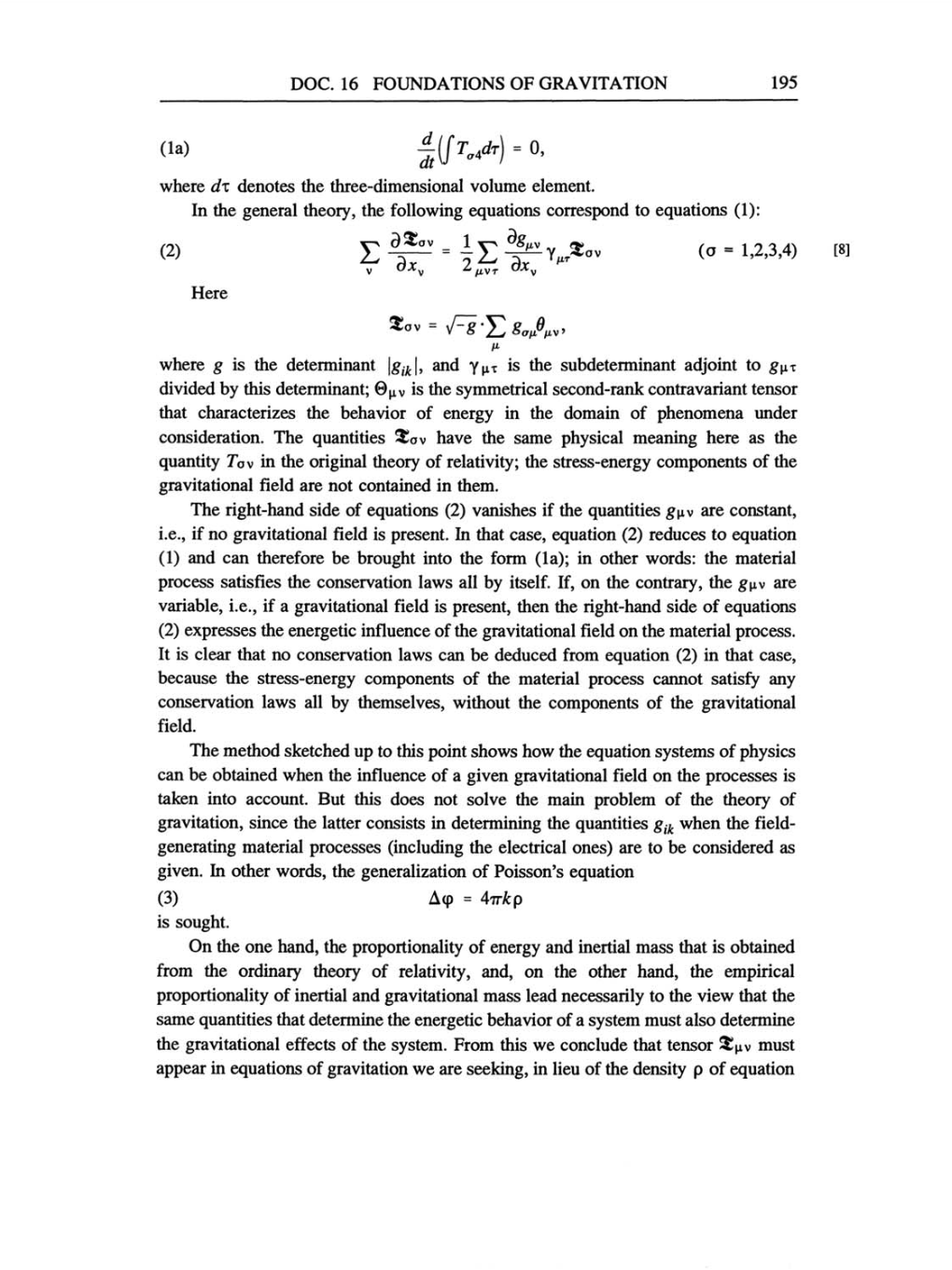DOC.
16
FOUNDATIONS OF GRAVITATION
195
(1a)
i
(/V)
=
0,
where
dr
denotes the three-dimensional volume element.
In the
general theory,
the
following equations correspond
to
equations (1):
(2)
(0
=
1,2,3,4)
/XVT w"vV
Here
$ov
=
fg-V
g7/X6/XV
9
where
g
is the determinant
\gik\,
and
Yut
is the subdeterminant
adjoint
to gut
divided
by
this
determinant; 0uv is
the
symmetrical
second-rank contravariant tensor
that characterizes the behavior of
energy
in the domain of
phenomena
under
consideration. The
quantities
Sov have the
same
physical meaning
here
as
the
quantity
Tov
in the
original theory
of
relativity;
the
stress-energy components
of
the
gravitational
field
are
not
contained in them.
The
right-hand
side of
equations
(2)
vanishes if the
quantities guv
are
constant,
i.e.,
if
no
gravitational
field is
present.
In that
case,
equation
(2)
reduces
to
equation
(1)
and
can
therefore be
brought
into the
form
(1a);
in
other words:
the material
process
satisfies the conservation laws all
by
itself.
If, on
the
contrary,
the
guv
are
variable, i.e.,
if
a gravitational
field
is
present,
then the
right-hand
side
of
equations
(2)
expresses
the
energetic
influence of
the
gravitational
field
on
the material
process.
It
is clear that
no
conservation laws
can
be deduced from
equation
(2)
in that
case,
because the
stress-energy
components
of the material
process
cannot
satisfy any
conservation laws
all
by
themselves,
without the
components
of
the
gravitational
field.
The method sketched
up
to
this
point
shows how the
equation systems
of
physics
can
be obtained when the influence of
a given gravitational
field
on
the
processes
is
taken into
account.
But this does
not
solve
the
main
problem
of
the
theory
of
gravitation,
since the latter consists in
determining
the
quantities
gik
when
the field–
generating
material
processes (including
the electrical
ones)
are
to
be considered
as
given.
In other
words,
the
generalization
of
Poisson's
equation
(3)
A(p
=
4irkp
is
sought.
On
the
one
hand,
the
proportionality
of
energy
and inertial
mass
that is obtained
from the
ordinary theory
of
relativity,
and,
on
the
other
hand,
the
empirical
proportionality
of inertial and
gravitational
mass
lead
necessarily to
the view that the
same quantities
that determine the
energetic
behavior of
a
system
must
also determine
the
gravitational
effects of the
system.
From this
we
conclude that
tensor guv must
appear
in
equations
of
gravitation
we are
seeking,
in lieu of
the
density
p
of
equation
[8]
